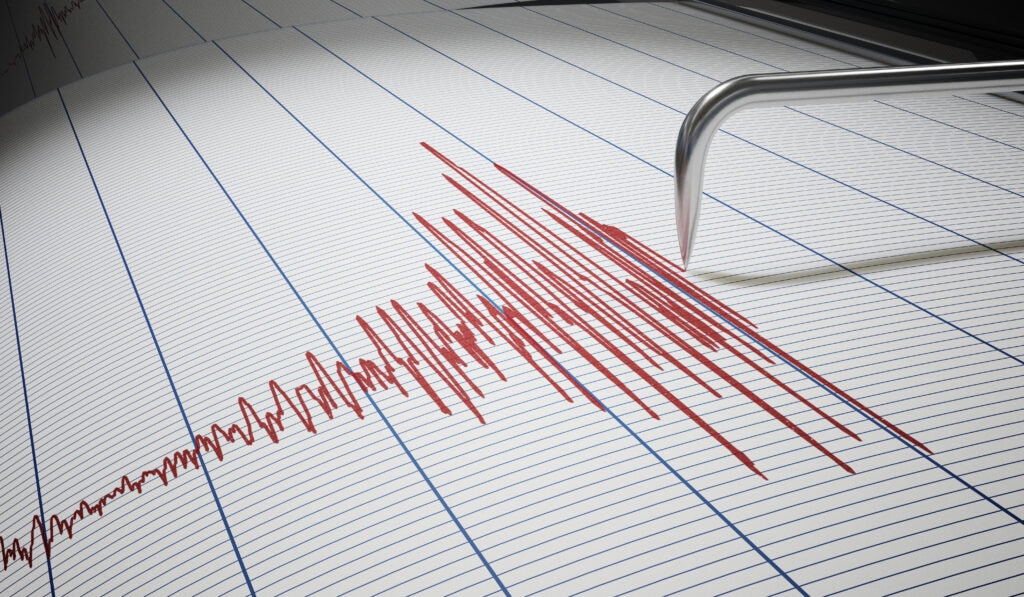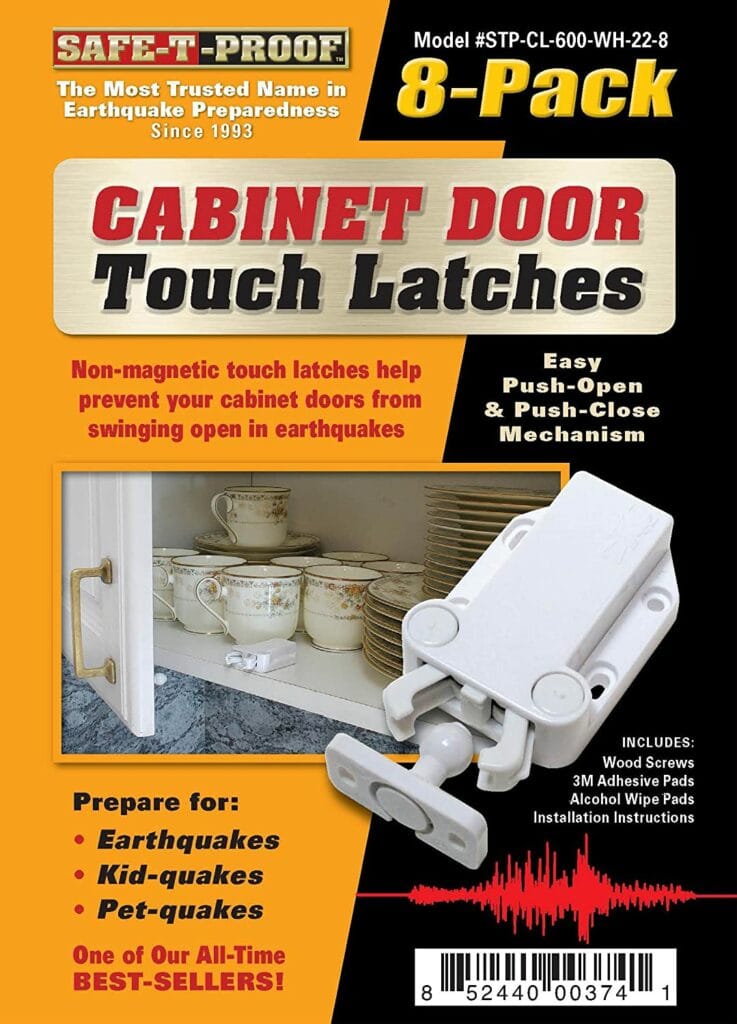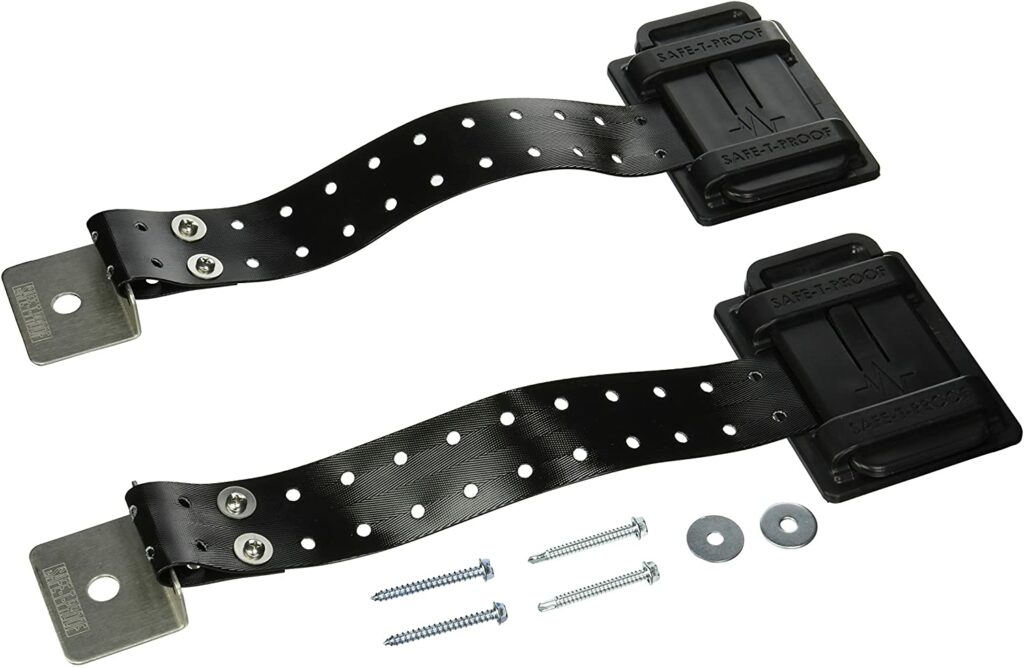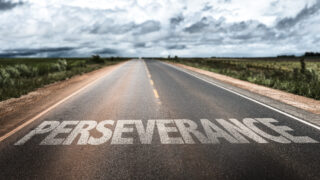Table of Contents
ToggleSecure Your Space: In All Places You Can
I am fortunate. I am in my sixties yet have never been in an automobile accident where I needed my seatbelt. Yet, I buckle my seatbelt every time I get behind the wheel. Something, probably the law stating I’d get a ticket if I drove a car without one, has inspired me to regularly attach my seatbelt, and make sure everyone in the vehicle does the same. Or maybe it was the catchy seatbelt song that was on television when I was a kid.
Four times in my lifetime I have experienced earthquakes that have caused damage to the contents of the homes where I lived. Had the furniture been equipped with straps that acted like seatbelts and kept items from flying about due to the shaking, the earthquakes would not have been nearly as traumatic or damaging.
Of all the things you can do to prepare for an earthquake, the most critical task is ensuring items stay put in the shaking, or taking steps to “Secure Your Space” as it is called in the exceptional publication, “The Seven Steps to Earthquake Safety”. I call this effort putting seatbelts on furniture, and it is Step One of the Seven Steps.
Is The Whole Country At Risk For Earthquake Damage?
Every few years building codes are revised. Most states have their own, and for those that don’t there is the International Building Code. And as these official building directions evolve, buildings get stronger. While California most likely has the most stringent building codes in the United States as they relate to earthquakes, other states are catching up. I lived in Portland, Oregon during the 1993 Spring Break Quake, and up until that time it seemed nobody in the region ever talked about earthquakes.
Since then I’ve moved to the relative safety of Southern California, and now people are talking a lot about earthquakes in the Pacific Northwest. Heck with a good sized earthquake damaging the Washington Monument and all the fracking-related earthquakes going on, its safe to say that much of the country is at risk from earthquake damage.
New Building Codes Decrease Risk
As the news about earthquake risk seems only to rise so to does the need to reduce earthquake damage and loss of life. With building codes ramping up to meet the newly revised risk, newer buildings, those constructed to newer codes that consider the increased risk, get better and better. I heard a representative from the United States Geological Survey (USGS) call single-story wood framed houses built in the last 25 years in California “seismic zones of safety”. Not too shabby.
It’s little wonder then that the Federal Emergency Management Association (FEMA) says that more than 75% earthquake-related losses in future California earthquakes will be due to non-structural systems. But what if you live in an area vulnerable to earthquakes where the building codes haven’t caught up to California’s, or if you live in an old, vulnerable building in California? What then?
Past Earthquakes Help Us See Future Earthquakes
No one can predict earthquakes, but their frequency can be estimated by looking at past earthquakes and determining the probabilities of different magnitude quakes in the future. The USGS regularly releases information regarding these probabilities with something called the Uniform California Earthquake Rupture Forecast(UCSRF). The third such forecast is the most current one, and it is chock-full of maps and charts and probability estimates. In the part of California where I live there are more earthquake faults than freeways. A close look at the “Los Angeles Region” chart in UCERF3 reveals the critical nature securing non-structural items.
Past earthquakes have demonstrated that a magnitude eight earthquake can cause massive damage to structures AND building contents. A magnitude six earthquake won’t collapse many buildings in my part of the world, because of the improved building codes. However, the contents of buildings most definitely will get tossed about in an earthquake.
Earthquake Magnitudes And Damage

What is the probability difference between a magnitude eight and a magnitude six earthquake here in the Los Angeles area? According UCERF3, there is a seven percent probability of at least one magnitude eight earthquake occurring here in the next thirty years. However, there is a 96% chance of at least one magnitude six during the same time frame. That’s a 96% chance of an earthquake that can cause the type of damage that occurred in Napa.
The industry called non-structural earthquake damage mitigation, or what I term “Fasten Stuff Down”, began in earnest in the early 1990’s. It’s about a third construction, a third science, and a third innovation. Not many companies do the actual retrofit work, but Safe-T-Proof was one of the first. It has fallen on structural engineers to develop the best practices on how to most effectively secure items, running calculations with complex formulas to do, despite their titles, non-structural engineering. Testing at places like Pacific Earthquake Engineering Research Center (PEER) is continual, and often reveals startling information regarding previously-held beliefs about how best to secure items to prevent earthquake damage.
Secure Your Space: Devices To Prevent Earthquake Damage
Consider the previous backbone of earthquake fastening, the lowly angle clip. Sometimes called l-brackets, these in the past have been common items to use when securing building contents. The typical clip gets positioned on top of a cabinet or similar item. Screws get drilled through the bracket and into the item and the wall. Simple and cheap. Effective? Not so much. Shake table testing reveals that these types of brackets are easily mangled in strong shaking.

Granted, the cabinet these angle clips were attached to did not fall during the shake table test, but they’d need to be replaced before an aftershock or even stronger earthquake occurs. Remember aftershocks can occur within just minutes after a strong earthquake.
The best option to secure your space and other tall furniture is to use flexible fastening so that the floor and the wall can move independently of one another during shaking. This is critical, as earthquake forces often move unpredictably. The ground can lift but doesn’t always. The walls can move left, right front, back, or in any combination of direction.
Innovation will always be a part of non-structural earthquake damage mitigation. New earthquake-activated cabinet door latches were invented by a structural engineer with small grandchildren. Earthquake-activated emergency lighting, by a man who was stuck in a dark basement during the Loma Prieta earthquake. Its important to pay attention to the rapidly-changing industry. You never know what cool items are on the horizon. One safety director once asked me, “Do they have force fields to keep items from moving in earthquakes?” I know he was kidding, but it makes me wonder what is coming next.
For a limited time, Safe-T-Proof.com is offering 15% off all products to all fans of Manopause. Be sure to contact Safe-T-Proof at 1-800-377-8888 if you have any questions along the way.

















